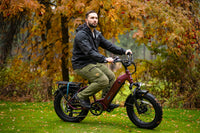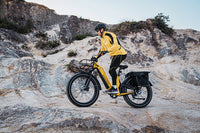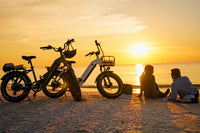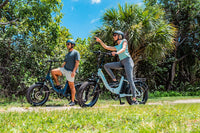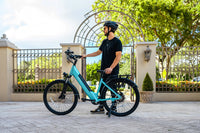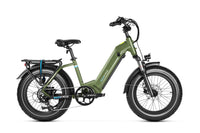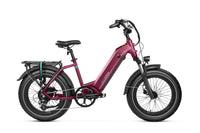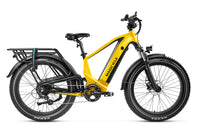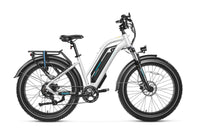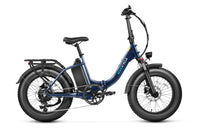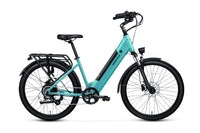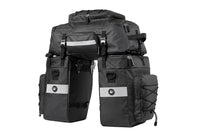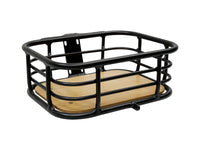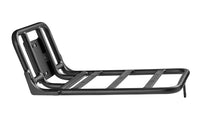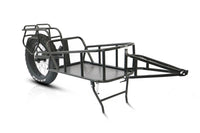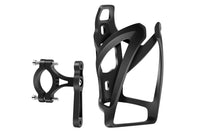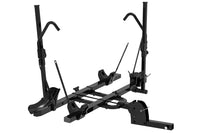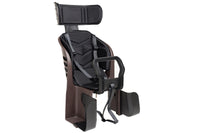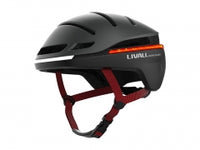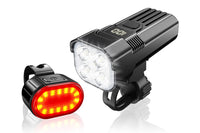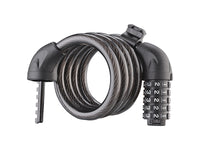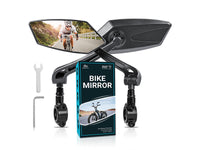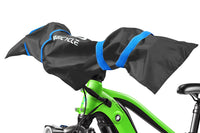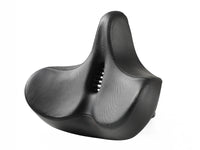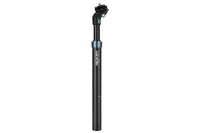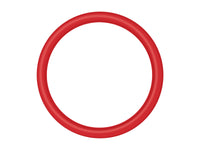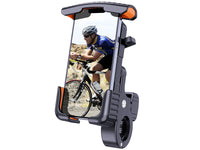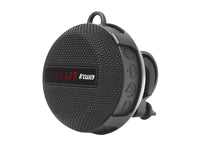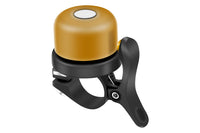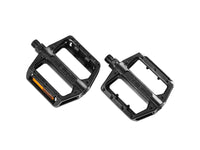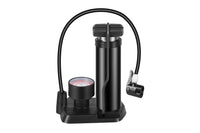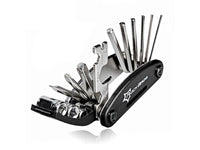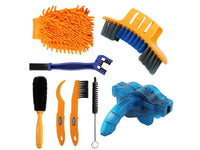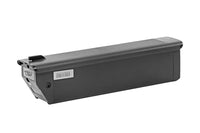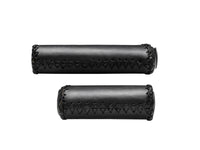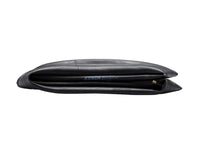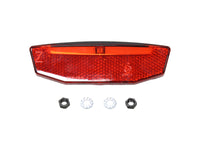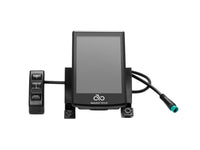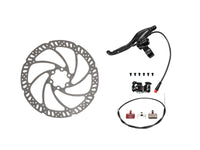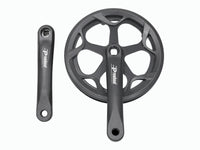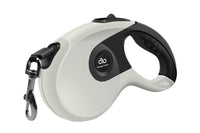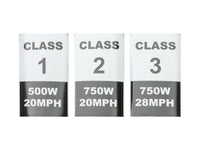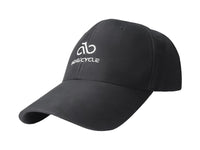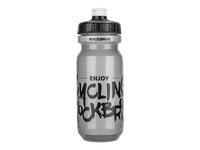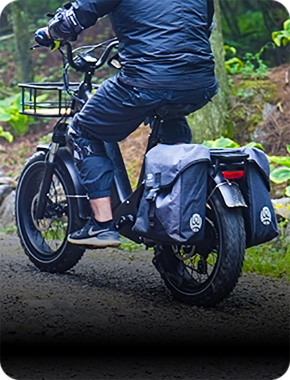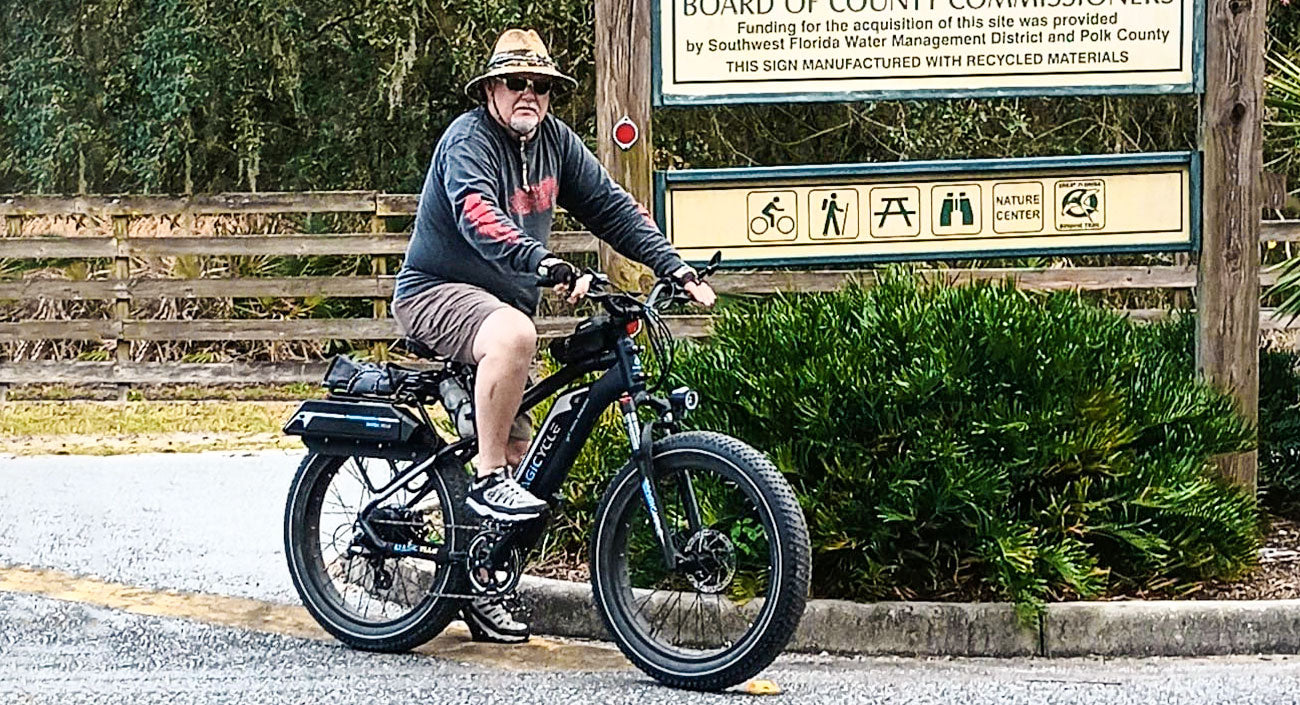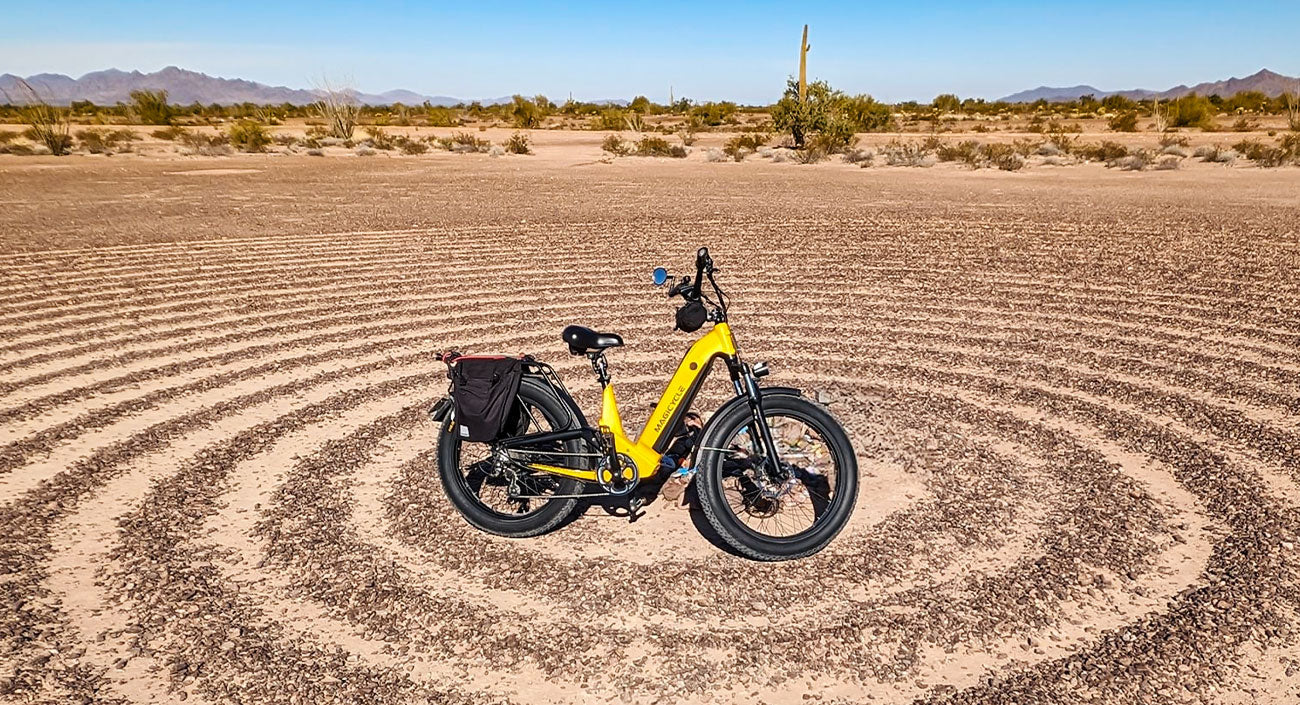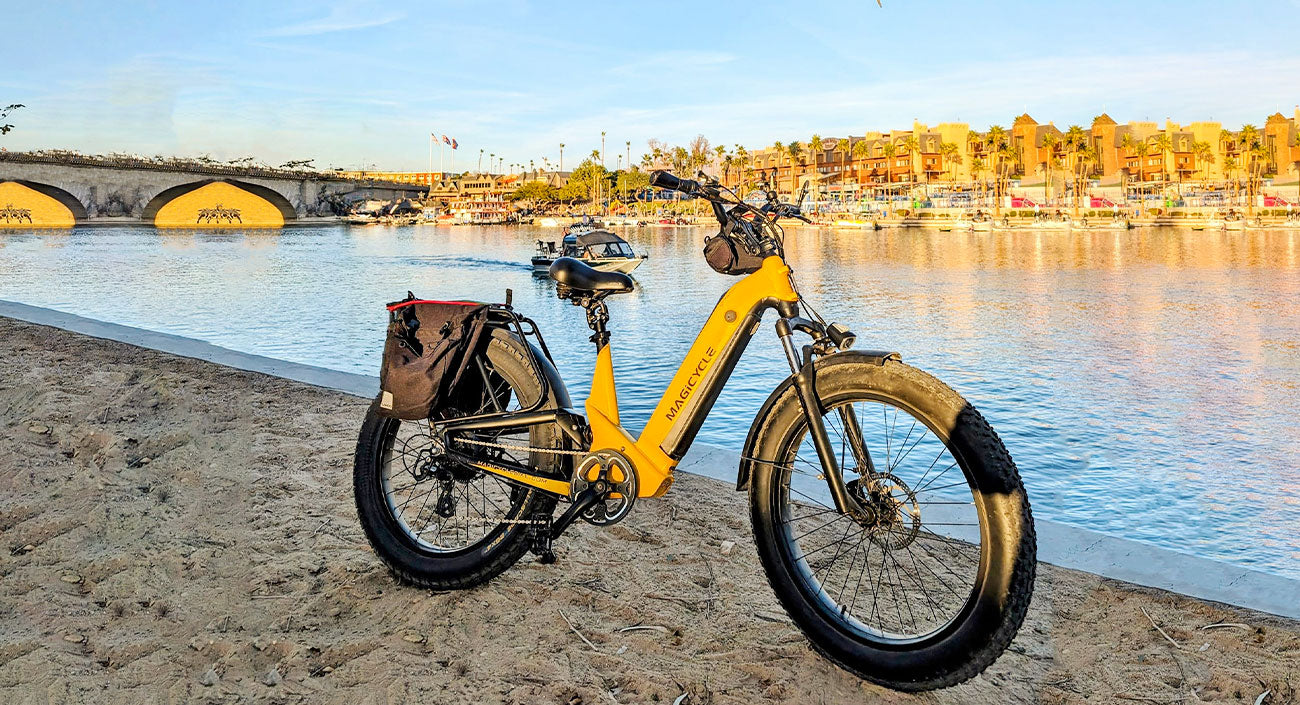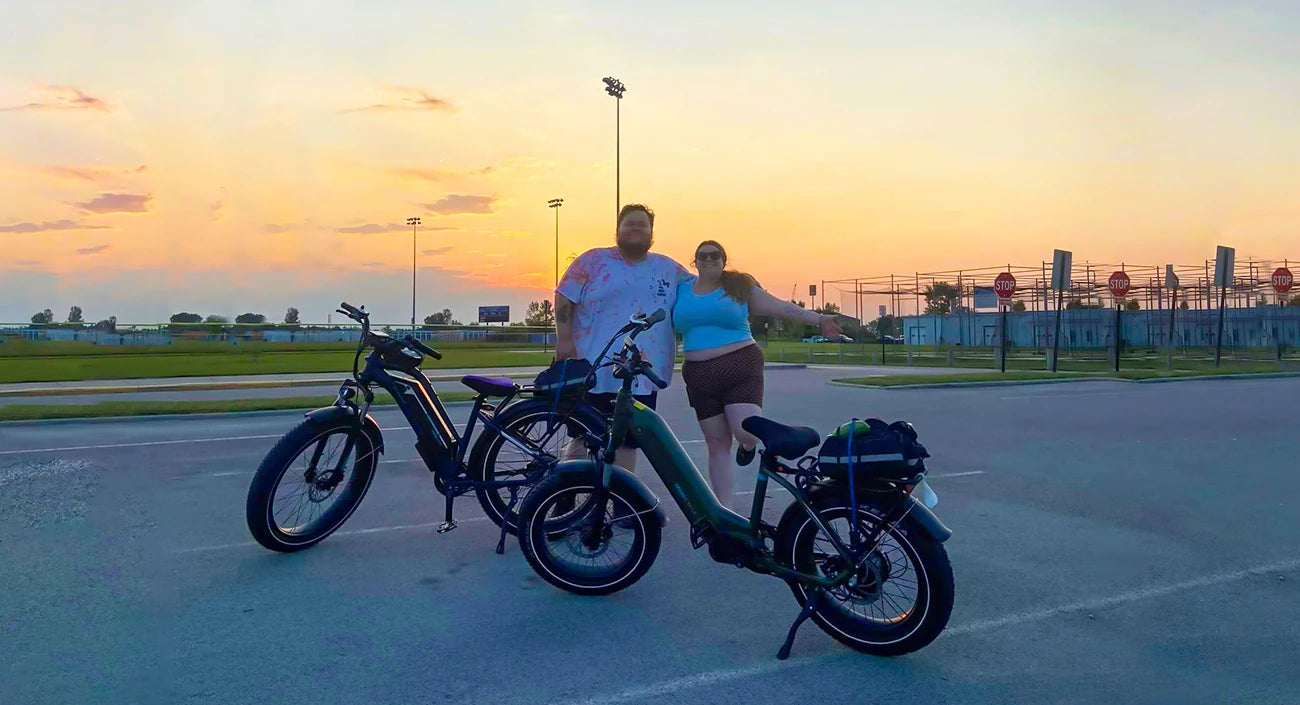 November 23,2024
November 23,2024
 November 23,2024
November 23,2024
Quick Answer
Yes, all e-bikes have a manufacturer-specified weight limit, which usually ranges between 220 and 300 pounds for most models. However, some e-bikes, like the Magicycle Cruiser Pro, are designed to support up to 500 pounds.
Introduction
Ebikes have made cycling more accessible and fun for people of all ages and abilities. But just as with any bike, e-bikes have their limits—especially when it comes to how much weight they can handle. We'll show what goes into an e-bike's weight-carrying capabilities, from the frame to the tires. Plus, we'll share some quick tips on how you can tell if an e-bike is up to the task of supporting your weight just by looking at it.
What Factors Can Affect the Weight Limit of Ebikes?
The weight capacity of an electric bike is determined by several key components. Understanding these factors can help you choose the right ebike for your needs.
Frame
The frame is the backbone of the e-bike, and its material and design play a crucial role in the weight limit. Frames made of sturdy materials like steel or reinforced aluminum can generally support heavier loads compared to lightweight carbon fiber frames.
Wheels and Tires
The wheels and tires must be capable of bearing the entire weight of the rider and the bike. Larger-diameter wheels with more spokes and wider, high-quality tires can handle greater loads without compromising performance or safety.
Suspension
E-bikes equipped with suspension systems need to have robust, well-designed components that can withstand the added weight without bottoming out or losing their intended functionality.
Drivetrain and Components
The drivetrain, including the motor, gears, and chains, must be appropriately sized and reinforced to power the e-bike under heavier loads. Other components like the handlebars, seatpost, and brakes also need to be sturdy enough to maintain control and stability.
Rider Positioning and Weight Distribution
How the rider's weight is distributed on the e-bike can also impact the overall weight capacity. Proper riding posture and weight balance help ensure the bike's components are not overloaded.
By considering these key factors, you can better identify an e-bike that is rated to support your weight and provide a safe, comfortable, and enjoyable riding experience.
How to Spot an E-Bike's Weight Capacity at a Glance
Selecting the right e-bike involves several considerations, but recognizing its weight capacity shouldn't require more details about technical specs. Here are some straightforward tips to help you identify if an e-bike can handle your weight just by looking at it.
Visual Inspection Tips
- Check the Label: Start with the basics. Manufacturers often include the maximum weight capacity on a label or engraving on the frame. This is your most reliable quick reference.
- Assess the Frame: A thicker and more robust frame typically indicates a higher weight capacity. If the frame is chunky and looks solid, especially where it supports the seat and the handlebars, that's a positive sign.
- Examine the Wheels: More spokes mean more strength. Count them — wheels with 36 spokes or more are usually built to support additional weight. Also, check for heavy-duty rims; they might be designed for higher loads.
- Evaluate the Tires: Look for wide tires — they distribute weight more effectively. Make sure they're in good condition and without signs of bulging on the sides, which can indicate insufficient capacity or poor tire pressure.
- Inspect the Seat Post and Handlebars: A reinforced or thicker seat post can suggest a design for greater weight. Similarly, sturdy, non-adjustable handlebars are less likely to bend or twist under stress.
- Consider the Suspension System: If the bike has a suspension, it should look substantial. Thin, flimsy suspension components may not perform well under heavier weights. A quick push on the suspension should show resistance and bounce back promptly.
Signs of Overburdened E-Bikes
An e-bike that's been carrying too much weight may show telltale signs of strain. Here's what to watch for:
- Bent or Broken Spokes: This could indicate the wheels have been under too much pressure.
- Distorted Frame: Look out for any bends or cracks in the frame, particularly around the joints, which could signal it's been overloaded.
- Worn Suspension: If the bike has a saggy appearance or the suspension bottoms out easily, it's likely been struggling with excessive weight.
- Uneven Tire Wear: This may reveal that the tires have been under too much load, especially if the wear is around the edges.
Using your eyes and these simple indicators, you can get a pretty good idea of whether an e-bike has been designed to handle your weight—and if it's still in good shape to do so.
Magicycle Cruiser Pro
The Magicycle Cruiser Pro is tailor-made for those with a love for adventure and a need for reliability in their ride. What sets it apart is its impressive 500-pound weight capacity, accommodating riders of all sizes without compromising on performance. This e-bike's solid frame and potent 750-watt motor mean you can tackle tough hills and long distances effortlessly. Plus, with the flexibility to switch between a mellow Class 2 and a zippy Class 3 mode, it meets various speed preferences, peaking at a brisk 28 MPH with pedal assistance.
Not just powerful, the Cruiser Pro is crafted with longevity in mind. Its battery life offers over 100 miles of riding on a single charge under ideal conditions. For stopping power, the advanced Tektro hydraulic brakes ensure a smooth and immediate response, which is essential for both sudden halts and gradual slowing. Cyclists can also fine-tune their riding experience thanks to the seven levels of pedal assist, providing personalized support whether you're after a light push or a significant thrust. With the Magicycle Cruiser Pro, every trip is about enjoying the journey, assured by the bike's combination of strength, endurance, and control.
The Takeaway on E-Bike Weight Limits
Knowing the weight limit of your e-bike is key to ensuring a safe and enjoyable riding experience. Whether it’s the robust build of the Magicycle Cruiser Pro or another model, paying attention to the details—from frame strength to tire pressure—can make all the difference in performance and longevity. Heeding the signs of wear and recognizing the capacity markings are simple yet effective steps toward responsible e-biking. By keeping these insights in mind, you can choose an e-bike that supports you fully on every adventure, providing peace of mind as you pedal towards new horizons.
FAQ
What happens if you exceed the ebike weight limit?
Exceeding an e-bike's weight limit can cause damage to the frame, wheels, suspension, and other components, leading to potential safety issues and a shortened lifespan for the bike.
Which bicycle is best for an overweight man?
For overweight riders, an e-bike with a higher weight capacity, sturdy frame, and wide tires is recommended to provide stability and support.
Can e-bikes carry passengers?
While some e-bikes are designed to carry an additional passenger, it's essential to stay within the manufacturer's stated weight limit, which often doesn't account for multiple riders.
How much weight can a hybrid bike hold?
Hybrid bikes typically have a weight capacity of 250-300 lbs, making them a good option for riders who want a versatile bike that can handle moderate loads.
What is the payload capacity on an ebike?
The payload capacity, which includes the rider's weight plus any cargo, is usually between 275 and 400 lbs for most e-bikes, depending on the model and specifications.


















































